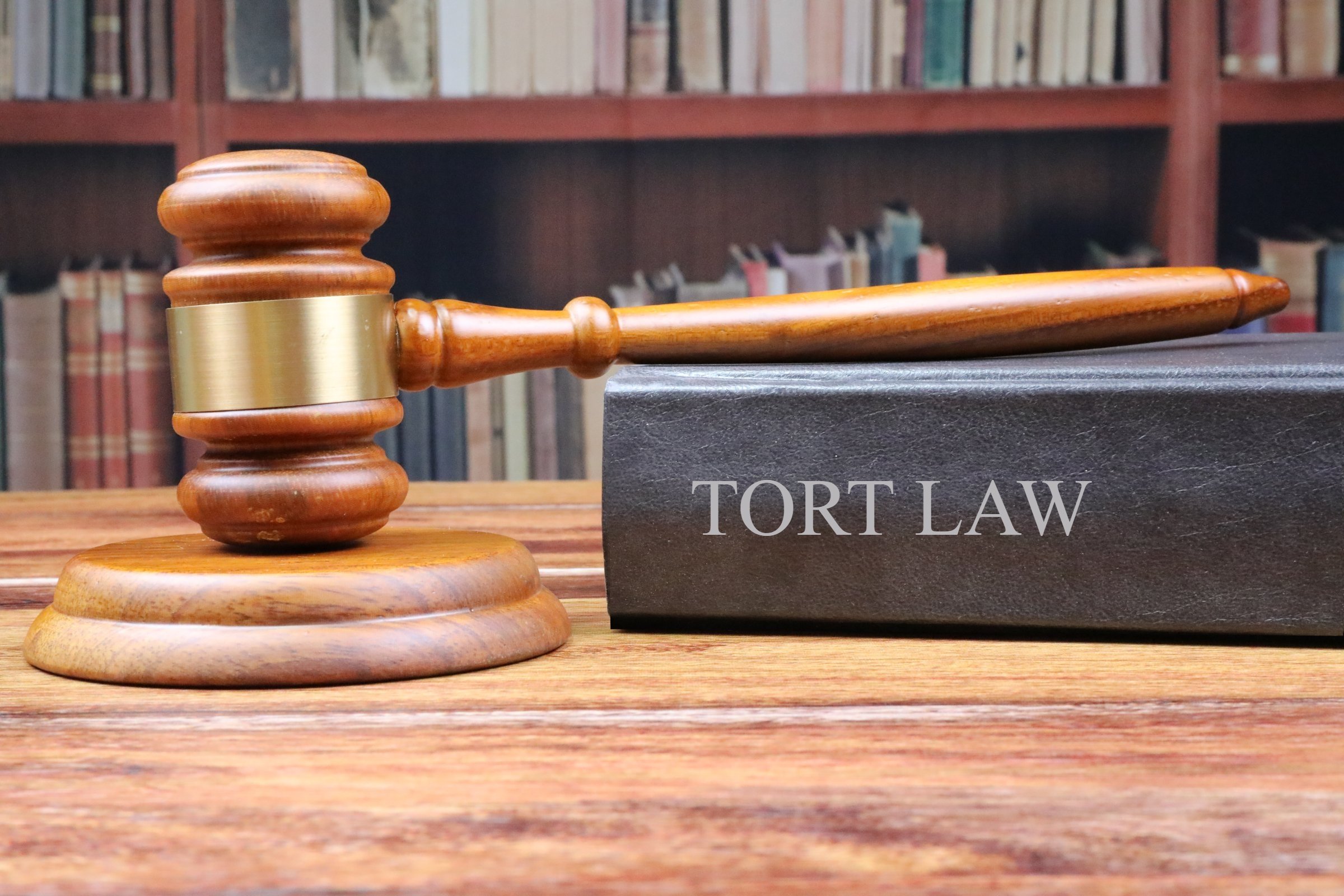Law of Torts: An Overview
Law of Torts: An Overview
The law of torts is a branch of law that deals with civil wrongs. A tort is a breach of a duty imposed by law, which gives rise to a civil right of action for a remedy not exclusive to any other area of law. The main objective of tort law is to provide relief to the person who has been wronged and to deter others from committing similar wrongs.
Essential Elements of a Tort
There are three essential elements of a tort:
- A wrongful act or omission by the defendant
- A legal duty owed by the defendant to the plaintiff
- Legal damage or injury suffered by the plaintiff as a result of the wrongful act or omission
A wrongful act or omission is any act or omission that violates another person's legal rights. For example, hitting someone, trespassing on someone’s property, defaming someone’s reputation, etc.
A legal duty is a duty imposed by law, not by contract or agreement. It is a duty to respect the rights of others and to act reasonably and prudently in a given situation. For example, a driver has a legal duty to drive carefully and not cause harm to other road users.
Legal damage or injury is any harm or loss suffered by the plaintiff as a result of the defendant’s wrongful act or omission. It can be physical, mental, emotional, or financial. For example, pain and suffering, medical expenses, loss of income, etc.
Types of Torts
Torts can be classified into two broad categories: intentional torts and unintentional torts.
Intentional torts are when the defendant deliberately acts to cause harm or injury to the plaintiff. For example, assault, battery, false imprisonment, fraud, etc.
Unintentional torts are those where the defendant acts negligently or carelessly and without the intention to cause harm or injury to the plaintiff. For example, negligence, professional negligence, nuisance, etc.
General Defense in Tort Law
The defendant can raise a certain defence to avoid or reduce liability in tort cases. Some of the common defences are:
· Volenti non-fit injuria: This means that no injury is done to one who consents. If the plaintiff voluntarily agrees to take the risk of harm or injury from the defendant’s act or omission, then he cannot sue the defendant for tort. For example, if a person participates in a dangerous sport and gets injured, he cannot sue the organizer for tort.
· Consent: This means that the plaintiff has given his permission or approval for the defendant’s act or omission. Consent can be expressed or implied. Express consent is given verbally or in writing. Implied consent is inferred from the conduct or circumstances of the parties. For example, if a person visits a doctor and allows him to perform surgery, he has given implied consent for the doctor’s actions.
· Necessity: This means that the defendant’s act or omission was necessary to prevent greater harm or danger to himself or others. For example, if someone breaks into another person’s house to escape from a fire, he can plead necessity as a defence.
· Statute of limitations: This means that there is a time limit within which the plaintiff must file his suit for tort. If he fails to do so within the prescribed period, his claim will be legally barred. The period varies depending on the type of tort and jurisdiction.
· Self-defense: This means that the defendant’s act or omission was done to protect himself or his property from an imminent threat or attack by the plaintiff. For example, if a person hits another person who is trying to rob him, he can plead self-defence as a defence.
Conclusion
The law of torts is an important and dynamic area of law that deals with various aspects of civil wrongs and remedies. It aims to protect the rights and interests of individuals and society from unlawful acts or omissions by others. It also seeks to balance the interests of both parties and ensure justice and fairness in each case.
The Law of Torts FAQ
What is a tort?
A tort is a civil wrong that causes harm to another person or their property, and for which the law provides a remedy. The word “tort” comes from the Latin term “tortum”, which means twisted or crooked. A tort is different from a crime, which is a public wrong that is punishable by the state, or a breach of contract, which is a violation of a voluntary agreement between two parties.
What are the sources of tort law?
Tort law is mainly based on judicial precedent, which means the decisions of courts in previous cases. Judges follow the principle of stare decisis, which means to stand by the decided cases. However, judges can also create new torts or modify existing ones based on changing social conditions or public policy. In addition, some statutes or legislations may also codify or modify certain aspects of tort law, such as damages, civil procedure, or specific torts.
What are the categories of tort law?
Tort law can be broadly divided into three categories: intentional torts, negligence, and strict liability.
· Intentional torts are those where the defendant acts deliberately to harm the plaintiff or their property. Examples of intentional torts are assault, battery, false imprisonment, defamation, fraud, trespass, and nuisance.
· Negligence is the failure to exercise reasonable care that a prudent person would in a similar situation, resulting in harm to the plaintiff or their property. Examples of negligence are professional negligence, medical malpractice, car accidents, slip and fall accidents, and product liability.
· Strict liability is the imposition of liability on the defendant without proving fault or intention. It applies to situations where the defendant’s activity is inherently dangerous or involves a high risk of harm to others. Examples of strict liability are abnormally dangerous activities, such as blasting or keeping wild animals, and defective products.
What are the elements of a tort claim?
To succeed in a tort claim, the plaintiff must prove four elements:
· Duty: The defendant owed a legal duty to the plaintiff to act or refrain from acting in a certain way.
· Breach: The defendant breached that duty by acting or failing to act in a certain way.
· Causation: The defendant’s breach caused harm to the plaintiff or their property.
· Damages: The plaintiff suffered actual damages or losses as a result of the defendant’s breach.
What are the remedies for a tort claim?
The main remedy for a tort claim is damages, which are monetary compensation awarded to the plaintiff for their harm or loss. Damages can be classified into three types:
· Compensatory damages: These are damages that aim to restore the plaintiff to their original position before the harm occurred. They include special damages, which are quantifiable losses such as medical expenses or lost income; and general damages, which are non-quantifiable losses such as pain and suffering or emotional distress.
· Punitive damages: These are damages that aim to punish the defendant for their wrongful conduct and deter them and others from repeating it. They are awarded in cases where the defendant acted with malice, fraud, or gross negligence.
· Nominal damages: These are symbolic damages that recognize that the plaintiff’s rights have been violated but no actual harm has been done. They are awarded in cases where the plaintiff cannot prove any actual loss.
Other remedies for a tort claim may include injunctions, which are court orders that require the defendant to do or stop doing something; and restitution, which is the return of property or money that was wrongfully taken by the defendant.
What are some examples of tort cases?
Here are some examples of famous tort cases:
· Donoghue v Stevenson (1932): This case established the principle of negligence and duty of care. A woman sued a manufacturer of ginger beer after finding a decomposed snail in her bottle. The court held that the manufacturer owed a duty of care to the consumer to ensure that their product was safe and free from defects.
· Rylands v Fletcher (1868): This case established the principle of strict liability for abnormally dangerous activities. A landowner sued his neighbour after his reservoir burst and flooded his mine. The court held that the neighbour was liable for the damage even though he was not negligent or at fault.
· M.C. Mehta v Union of India (1987): This case established the principle of absolute liability for hazardous industries. A lawyer sued the government and a chemical company after a gas leak from their plant killed thousands of people and injured many more. The court held that the company was liable for the harm caused by their activity regardless of any precautions they took.













Comments
Post a Comment
Thanks, For Your Valuable Comment